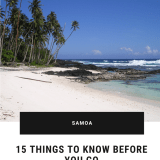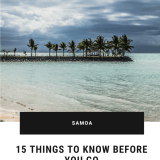
Samoa is a tropical paradise in the heart of the South Pacific, offering travellers a unique blend of natural beauty, rich culture, and warm hospitality. Before you embark on your Samoan adventure, there are some essential things you should know to make the most of your holiday.
The Samoan archipelago is a chain of 16 islands and numerous seamounts covering 3,123 km2 (1,206 sq mi) in the central South Pacific, south of the equator, about halfway between Hawaii and New Zealand.
There are two main islands:
In addition to the main islands, Samoa is dotted with smaller islets and atolls. Some of these include:
Samoa’s culture is deeply rooted in Polynesian traditions.
Fa’a Samoa: The Samoan Way of Life: At the heart of Samoan culture lies “Fa’a Samoa,” which translates to “The Samoan Way.” This philosophy emphasises community, respect for elders, and the importance of family. Visitors are warmly welcomed into this tight-knit society, where everyone is treated like family.
Language and Etiquette: The official languages of Samoa are Samoan and English. Learning a few basic Samoan phrases, such as “Talofa” (hello) and “Fa’afetai” (thank you), goes a long way in connecting with locals. Politeness and respect are highly valued, so it’s essential to be courteous and considerate during your stay.
Traditional Arts and Crafts: Samoans take great pride in their traditional arts and crafts, including intricate woodcarvings, woven mats, and siapo (bark cloth). These crafts are not only beautiful but also carry deep cultural significance, often featuring traditional motifs and patterns.
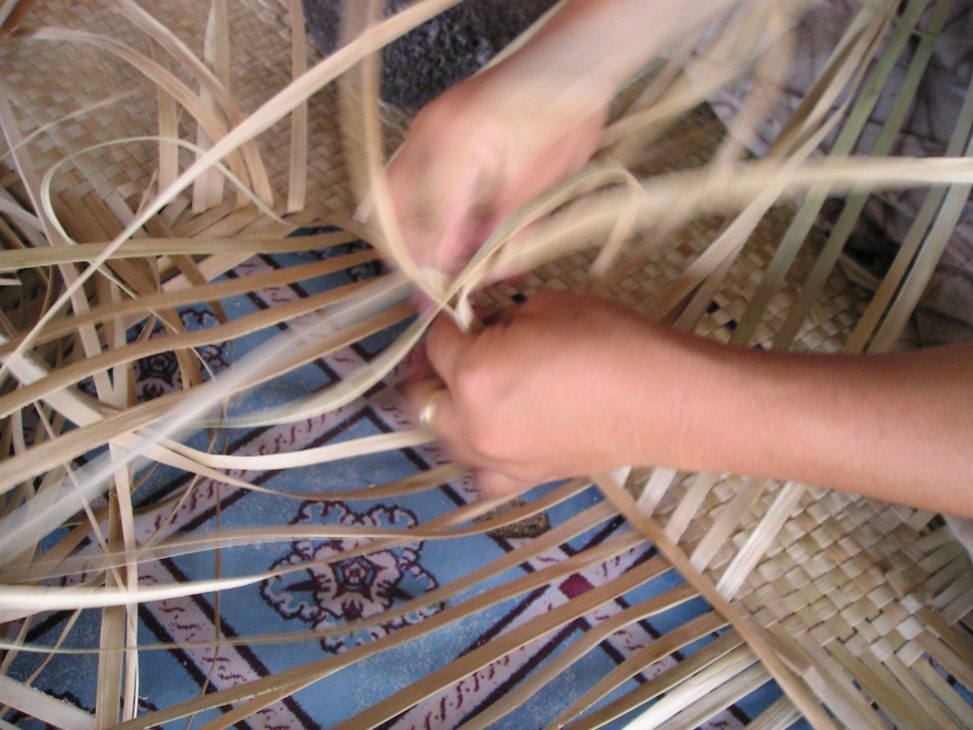
Music and Dance: Music and dance are integral to Samoan culture. The siva (dance) and the accompanying drumming and singing are a vibrant expression of their traditions. Don’t miss the chance to attend a “fiafia” dance performance, where you can witness the hypnotic fire dance and the graceful siva.
Religion and Spirituality: Christianity plays a significant role in Samoan life. Sundays are observed as a day of rest, and attending church services provides insight into the strong spiritual values of the culture.
Traditional Feasting: ‘Umu and Kava: Participating in a traditional Samoan feast, known as a “fiafia,” is a must-do cultural experience. The ‘umu, an earth oven, is used to cook an array of delicious dishes. You’ll also have the opportunity to try kava, a traditional ceremonial drink with mild sedative effects.
Conclusion: Samoa’s culture is a tapestry woven with deep-rooted traditions, warm hospitality, and a strong sense of community. As you explore this Pacific paradise, take the time to engage with the locals, learn about their customs, and embrace the beauty of Fa’a Samoa. Your journey through Samoa’s culture will be as unforgettable as its breathtaking landscapes.
Samoa boasts a warm, tropical climate throughout the year, making it an attractive destination for sun-seekers. The archipelago enjoys two main seasons: the wet season and the dry season.
Dry Season (May to October): For those seeking the perfect balance between sun and mild temperatures, the dry season is the ideal time to visit Samoa. With lower humidity levels, clear skies, and refreshing trade winds, this season offers comfortable conditions for exploring the islands. It’s also the best time for water activities, like snorkelling and diving, as underwater visibility is at its peak.
Wet Season (November to April): While the wet season in Samoa can bring occasional heavy rainfall and the risk of cyclones, it also offers its unique charm. The lush, green landscapes are at their most vibrant during this time, and you’ll encounter fewer crowds. If you’re a budget traveller looking for deals on accommodations and activities, the wet season might be worth considering, but be prepared for sporadic rain showers.
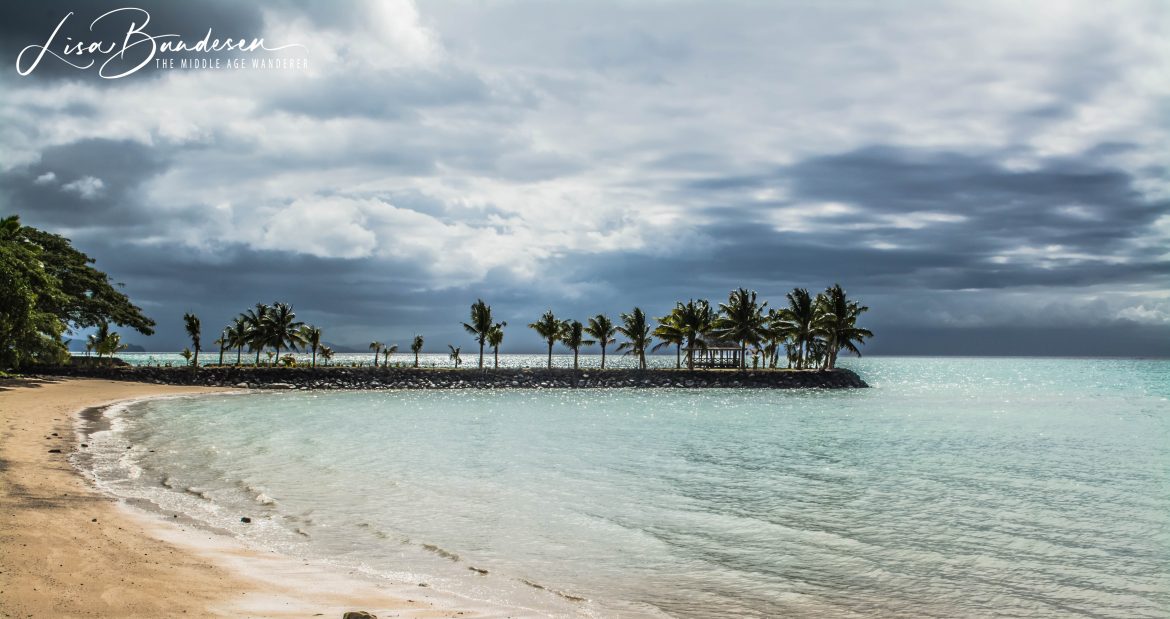
Choosing the Best Time: The best time to visit Samoa ultimately depends on your preferences. If you’re after sunny days and perfect beach weather, aim for the dry season from May to October. However, if you appreciate lush landscapes, lower prices, and don’t mind the occasional rain shower, the wet season can offer a more tranquil and budget-friendly experience.
Consult your healthcare provider for recommended vaccinations before traveling to Samoa.
Medical Services
Samoa’s main hospital is Tupua Tamasese Meaole Hospital at Motootua, Apia, Upolu Island. Connected to outlying hospitals, this central hospital provides a range of specialist medical services, surgery and outpatients clinics.
Along with the main hospitals, there are also several health clinics and general practitioners located around Samoa. In many rural areas healthcare facilities are basic.
However, if there is a serious health issue, patients may need to be transported by air to Australia or New Zealand for medical emergencies. So, make sure your travel insurance covers medical evacuations.
Diseases
Mosquito-borne diseases like dengue fever and chikungunya are a concern, so pack insect repellent and use it regularly.
Samoa experienced a measles epidemic in 2019. Make sure your vaccinations are up-to-date before you go.
When you set foot on the shores of Samoa, you’ll quickly realise that time here moves to its own unique rhythm—a rhythm known as “island time”.
A Relaxed and Unhurried Pace: Island time is a reflection of the unhurried, laid-back lifestyle that permeates Samoa. Locals go about their daily lives with a sense of calm and serenity, a stark contrast to the hustle and bustle of urban environments. When you’re in Samoa, you’ll find yourself naturally slowing down, letting go of the stresses of daily life.
Flexible Schedules: In Samoa, schedules can be flexible, and punctuality is often more of a guideline than a strict rule. Don’t be surprised if things start a little later than planned. Embrace this aspect of island time, as it allows for spontaneity and the opportunity to savour the moment.
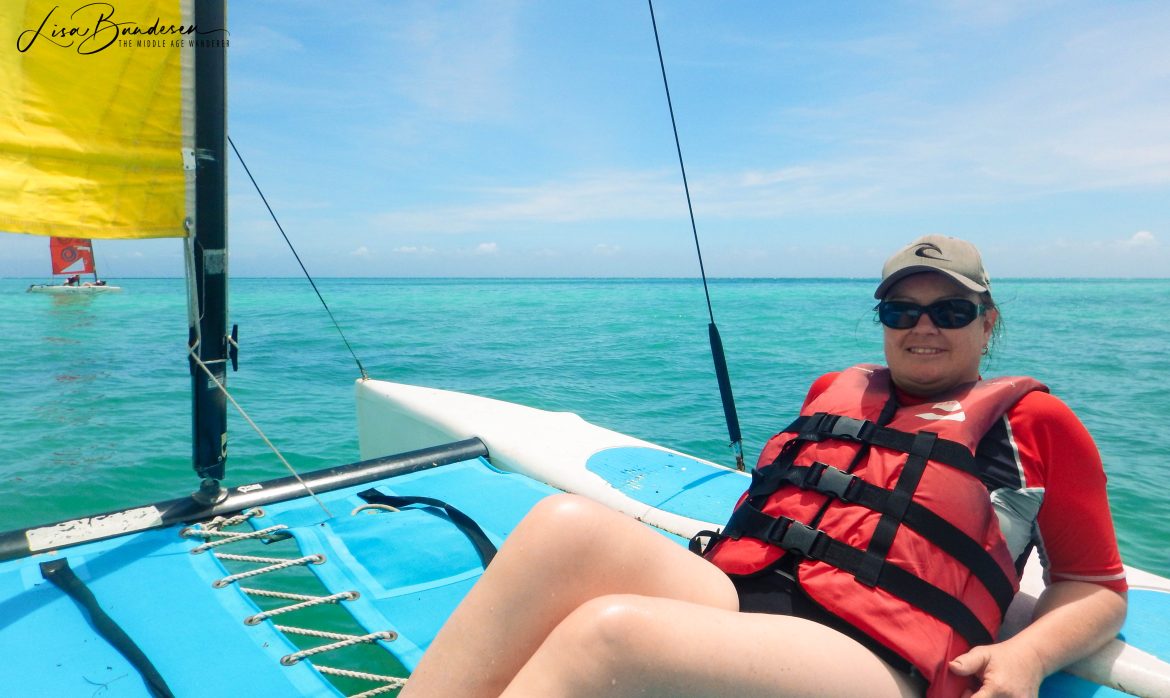
Patience is Key: As a visitor, patience is a valuable virtue to embrace while on the islands. Whether waiting for your meal at a local restaurant or navigating a slower pace of service, remember that you’re in a place where the journey is often just as important as the destination.
Disconnect and Reconnect: Island time encourages you to disconnect from the fast-paced world and reconnect with yourself, your surroundings, and the people you meet along the way. Take this opportunity to reflect, rejuvenate, and appreciate the simple pleasures of life.
Conclusion: As you embark on your Samoan adventure, be prepared to adapt to the delightful concept of island time. Let go of the need to rush, savor the moments as they come, and fully immerse yourself in the serene and welcoming culture of Samoa. Embracing island time will not only enhance your travel experience but also leave you with a deep appreciation for the beauty of slowing down and living in the moment.
The currency in Samoa is the Samoan Tala (WST). Credit cards are accepted at most hotels and larger establishments, but it’s advisable to carry some cash, especially when exploring more remote areas and shopping in local markets.
Ferries and small aircraft connect Upolu and Savai’i, making island-hopping convenient for those wanting to explore both sides of Samoa’s natural beauty.
Both Upolu and Savai’i are crisscrossed by a network of roads, but it’s essential to note that road conditions can vary, with some areas being unpaved. Drive cautiously, especially if you plan to explore more remote parts of the islands.
Public transportation in Samoa is limited. Renting a car is a popular option, but be prepared for driving on the left side of the road. Taxis are available in major towns, but it’s best to negotiate fares in advance.
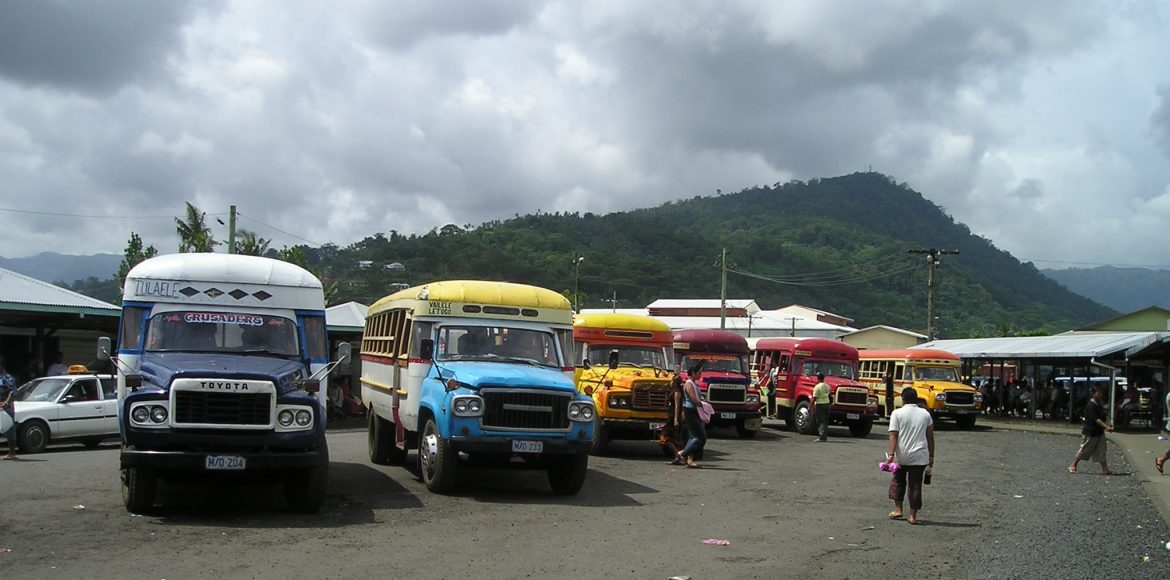
All nationalities traveling to Samoa can apply for a 90-day Visitor Permit on arrival using the arrival card. Travellers must have:
Flights to and from Samoa currently operate direct from Auckland with Air New Zealand, Sydney/Brisbane with Qantas, Nadi (Fiji) and Honolulu (Hawaii) with Fiji Airways.
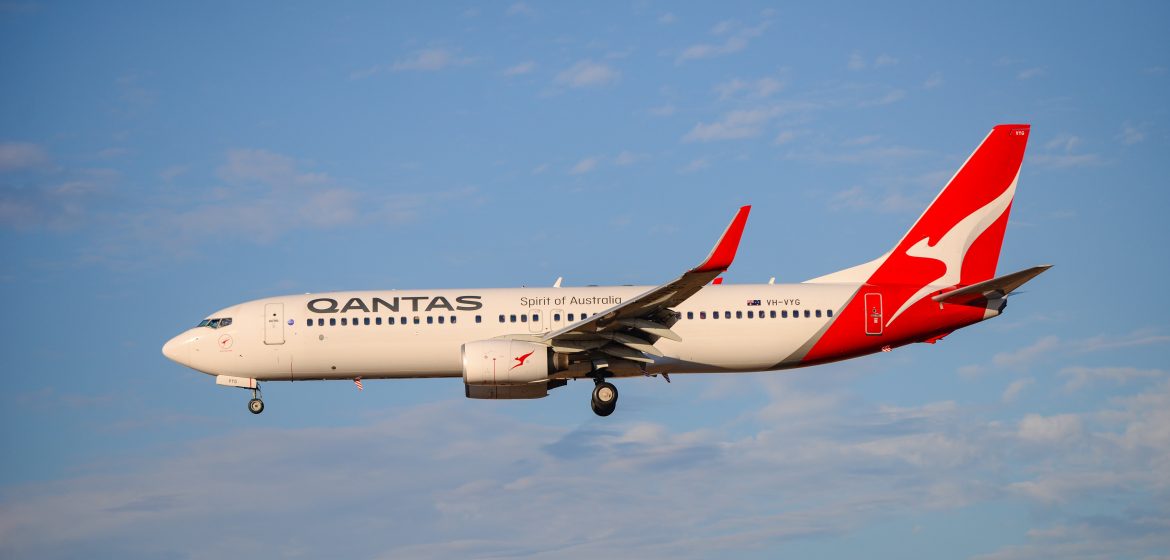
When it comes to natural beauty and geographical diversity, Samoa is a true Pacific paradise.
Volcanic Origins and Rugged Terrain: Samoa’s origins are volcanic, and it’s immediately evident in its dramatic landscape. Savai’i, the larger of the two main islands, boasts the impressive shield volcano, Mount Matavanu, which last erupted in the early 20th century. The rugged terrain of Savai’i is a playground for adventure seekers, offering opportunities for hiking, trekking, and exploring lava fields and ancient volcanic craters.
Lush Rainforests and Breathtaking Waterfalls: Both Upolu and Savai’i are blanketed in lush rainforests that are home to a rich variety of flora and fauna. The interior of these islands is a paradise for nature lovers, with dense vegetation, towering trees, and vibrant birdlife. As you venture deeper into the forests, you’ll encounter hidden gems like Togitogiga Waterfall, a serene cascade surrounded by tropical foliage.
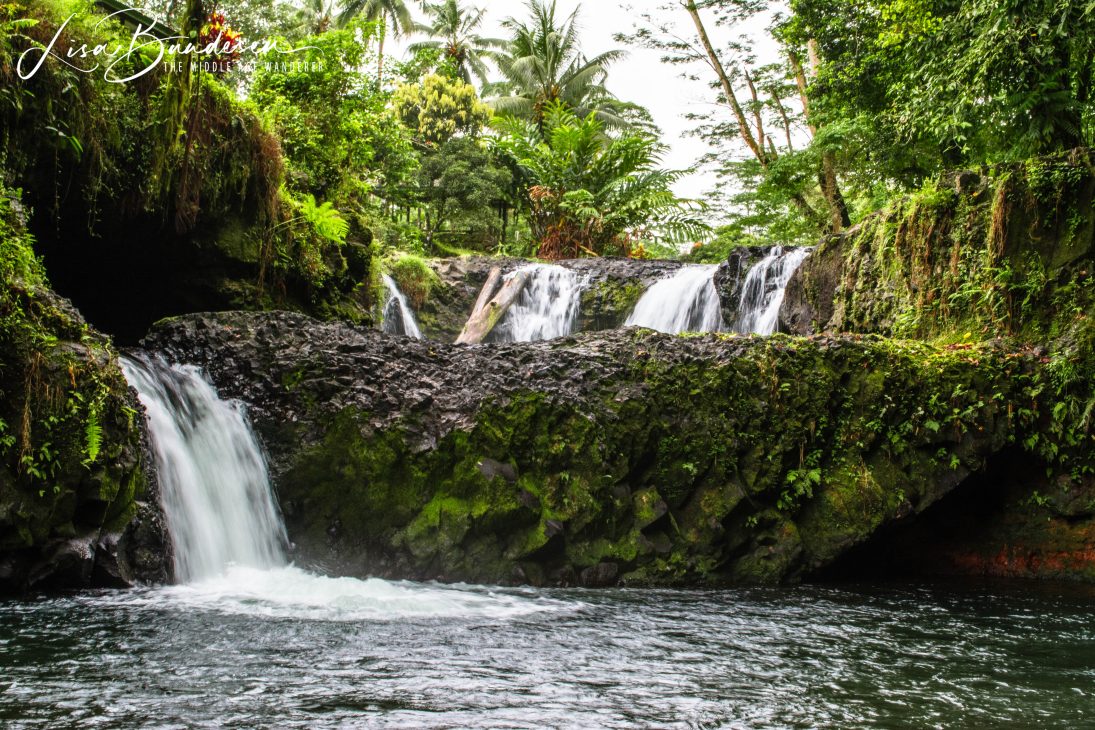
Stunning Coastlines and Pristine Beaches: One of Samoa’s most iconic features is its coastline. The islands are encircled by pristine beaches, each with its unique charm. Lalomanu Beach on Upolu is often considered one of the most beautiful in the South Pacific, with its powdery white sand and crystal-clear waters. In contrast, Savai’i offers rocky shores and rugged coastlines that add to its wild, unspoiled allure.
Aquatic Wonders and Coral Reefs: The warm, blue waters that embrace Samoa are teeming with marine life. Snorkelling and diving enthusiasts will be enthralled by the colourful coral reefs and the opportunity to swim with sea turtles. Palolo Deep Marine Reserve, near the capital Apia, is a haven for underwater exploration.
Samoa offers travellers with an aquatic wonderland like no other. With its crystal-clear waters, vibrant marine life, and lush coastlines, Samoa is a haven for water enthusiasts.
Snorkeling and Diving: Exploring Underwater Treasures: Beneath the tranquil surface of Samoa’s waters lies a world of wonder. Snorkelling and diving opportunities abound with colourful coral reefs teeming with tropical fish. Dive sites like Palolo Deep Marine Reserve offer a chance to witness the vibrant biodiversity of the Pacific Ocean.
Kayaking and Paddleboarding: Coastal Exploration: For a more leisurely adventure, grab a kayak or paddleboard and explore the calm bays and lagoons around Samoa. Glide through the serene waters while taking in the breathtaking coastal scenery, and keep an eye out for hidden caves and secluded beaches.
Surfing: Ride the Pacific Swells: Surfing enthusiasts will find Samoa’s consistent swells and uncrowded breaks irresistible. Aganoa Beach on Savai’i and Coconuts Beach Club on Upolu are popular surf spots, offering perfect waves for all skill levels.
Sailing and Yachting: Discover Hidden Coves: Set sail and embark on a journey to discover Samoa’s hidden coves and remote islands. Yacht charters and day cruises provide a unique perspective of the islands and offer the chance to enjoy snorkelling, fishing, and beach picnics.
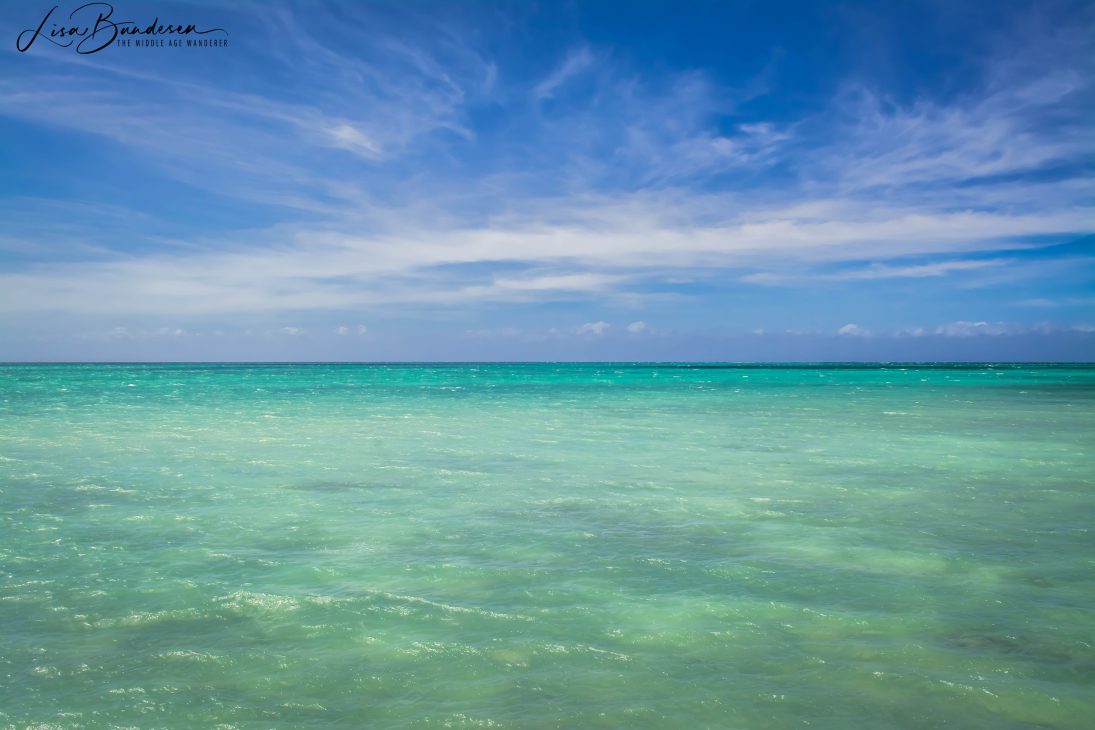
Samoa is generally a safe destination, but like any other place, exercise caution and be aware of your surroundings.
Crimes you could experience include robbery, violent assault and sexual assault.
You’re most at risk:
Petty crime is common, including theft from vehicles and accommodation.
To protect yourself from crime:
Samoa’s pristine beaches, lush rainforests, and vibrant culture are undoubtedly inviting, but where you choose to lay your head can greatly enhance your travel experience. From luxury resorts to traditional beachfront fales, Samoa offers diverse accommodation options to suit every traveller’s preferences and budget.
Luxury Resorts: For those seeking indulgence, Samoa boasts world-class luxury resorts. These beachfront havens offer opulent amenities, fine dining, spa services, and breathtaking ocean views. You’ll find them primarily on Upolu and Savai’i, promising a lavish and memorable stay.
Beachfront Fales: If you’re after an authentic and budget-friendly experience, traditional beachfront fales are an excellent choice. These open-air, thatched-roof huts offer a unique opportunity to connect with nature and the local culture. Fall asleep to the sound of the waves and wake up to stunning sunrises.
Hotels and Guesthouses: Samoa also offers a range of hotels and guesthouses, catering to various budgets. You can find comfortable accommodations with modern amenities in Apia and other major towns. These are perfect for travellers seeking convenience and comfort.
Eco-Resorts: For eco-conscious travellers, there are eco-resorts that blend harmoniously with Samoa’s natural beauty. These properties focus on sustainability and offer a unique experience surrounded by pristine nature.
Holiday Homes and Villas: If you’re travelling with a group or looking for a more private retreat, holiday homes and villas are available for rent. Enjoy the freedom of having your own space and kitchen facilities.
Whether it’s a luxurious beachfront villa or a traditional fale, Samoa’s accommodation options ensure a comfortable and memorable stay in this South Pacific paradise.
Samoan cuisine features fresh seafood, tropical fruits, and traditional dishes like “palusami” (coconut cream wrapped in taro leaves).
With its abundant coastal waters, Samoa offers a seafood lover’s paradise. You can experience dishes liked grilled fish, coconut crab and octopus.
Don’t miss out on the exotic fruits, including juicy mangoes, sweet papayas, and refreshing coconuts. They’re readily available at local markets.
Samoa’s cuisine reflects the simplicity and richness of its culture. Whether you’re dining in a local fale or a beachfront restaurant, every meal in Samoa is a delightful adventure that combines the essence of tradition with the freshness of island ingredients.
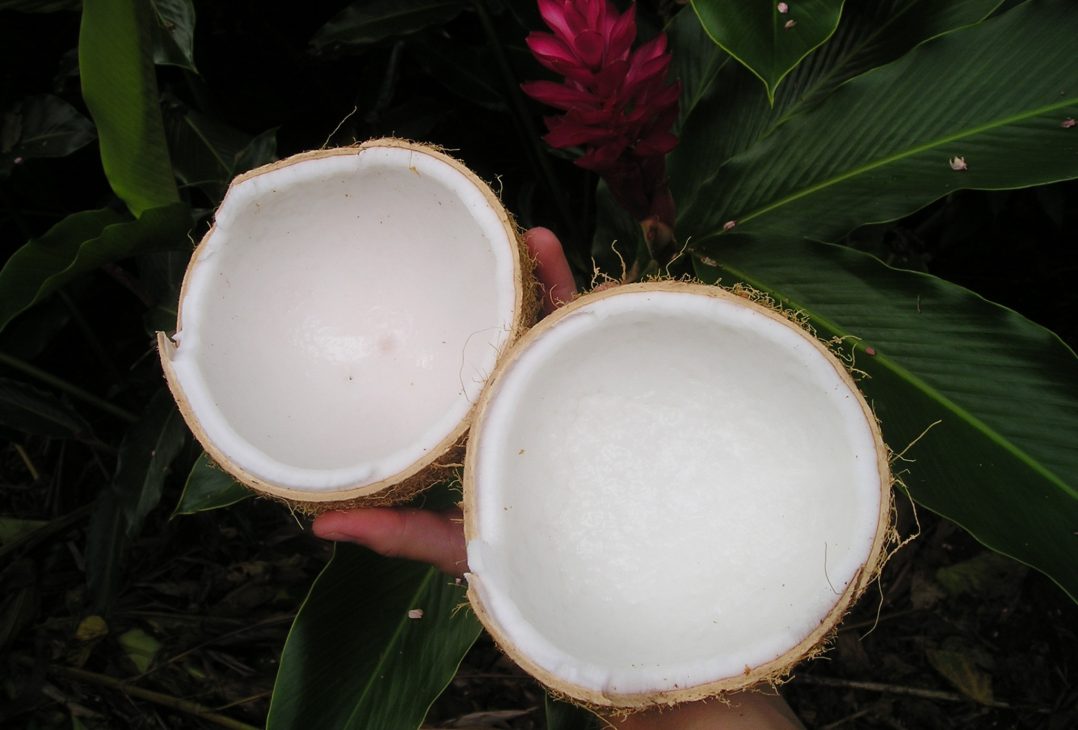
Tipping is not practised or expected in Samoa. However, if a guest wishes to leave a gift for good service then you are welcome to do so directly with the employee or the hotel reception.
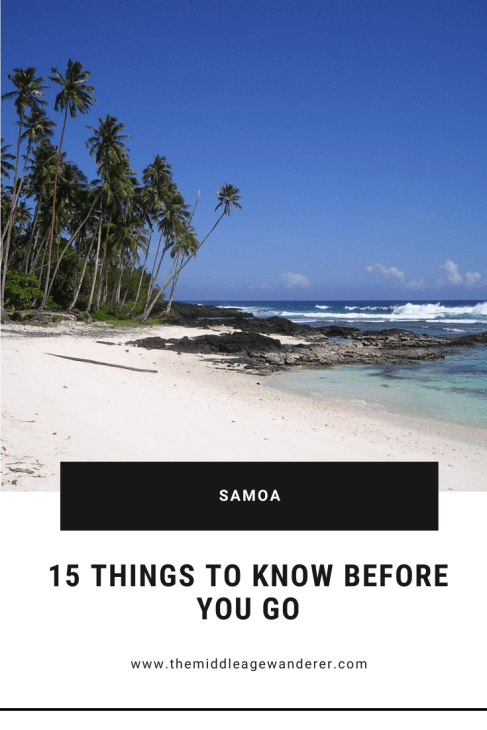
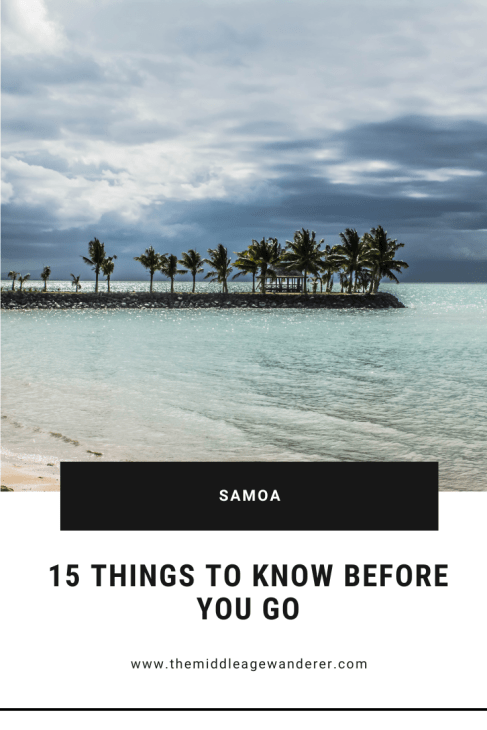
© 2024 The Middle Age Wanderer
Made with 
